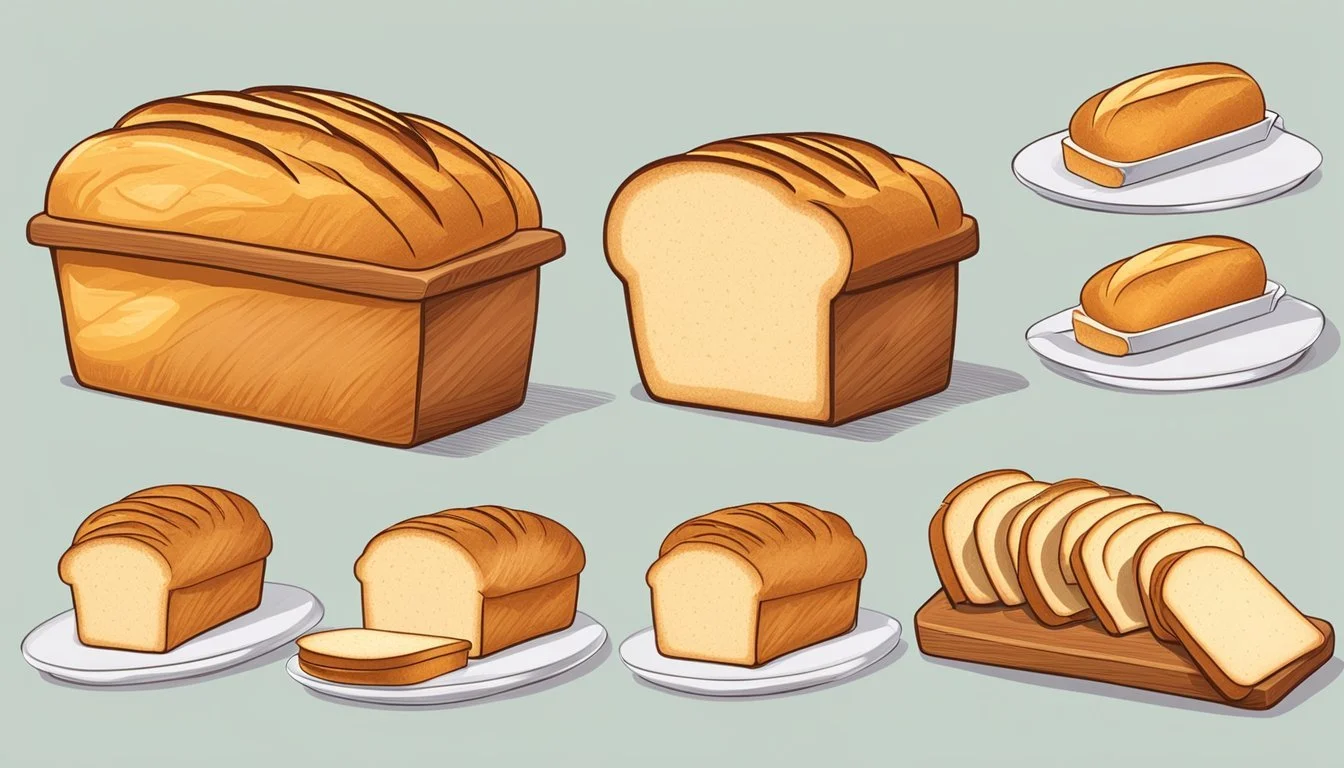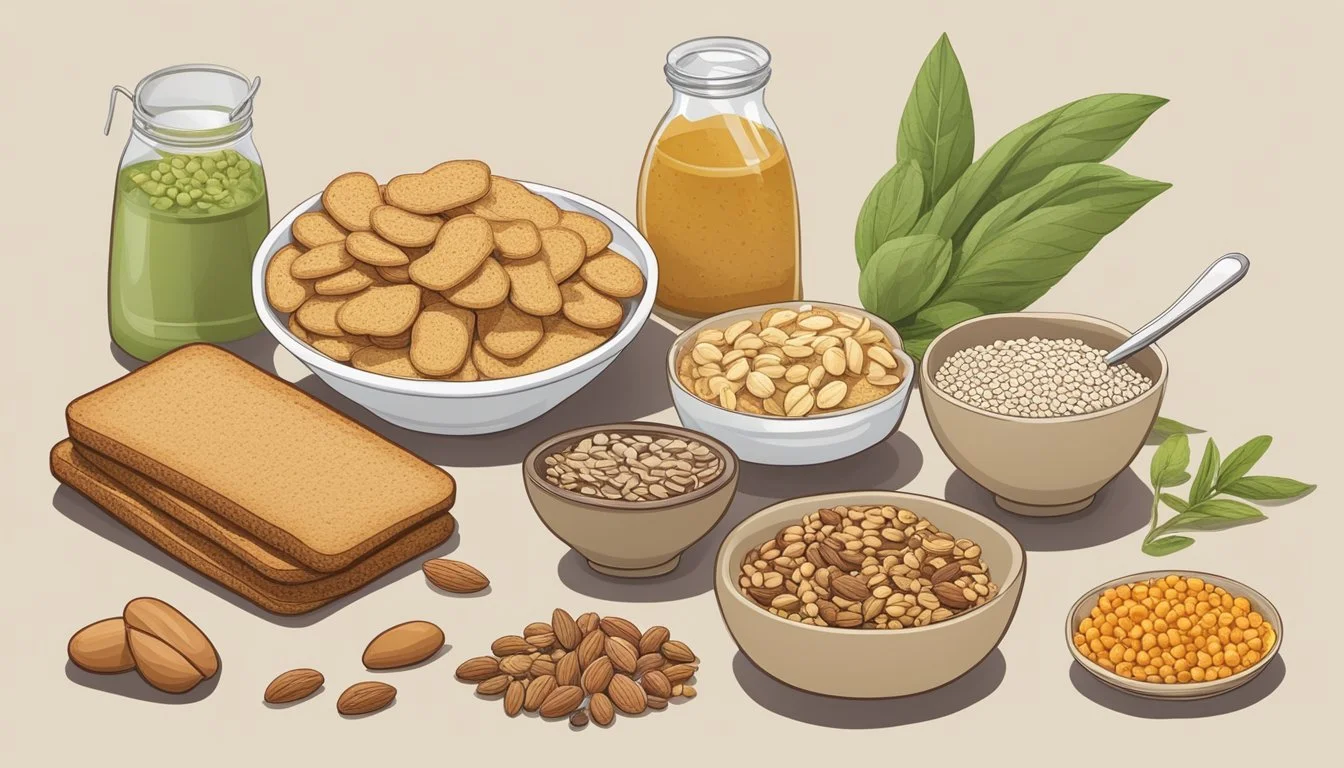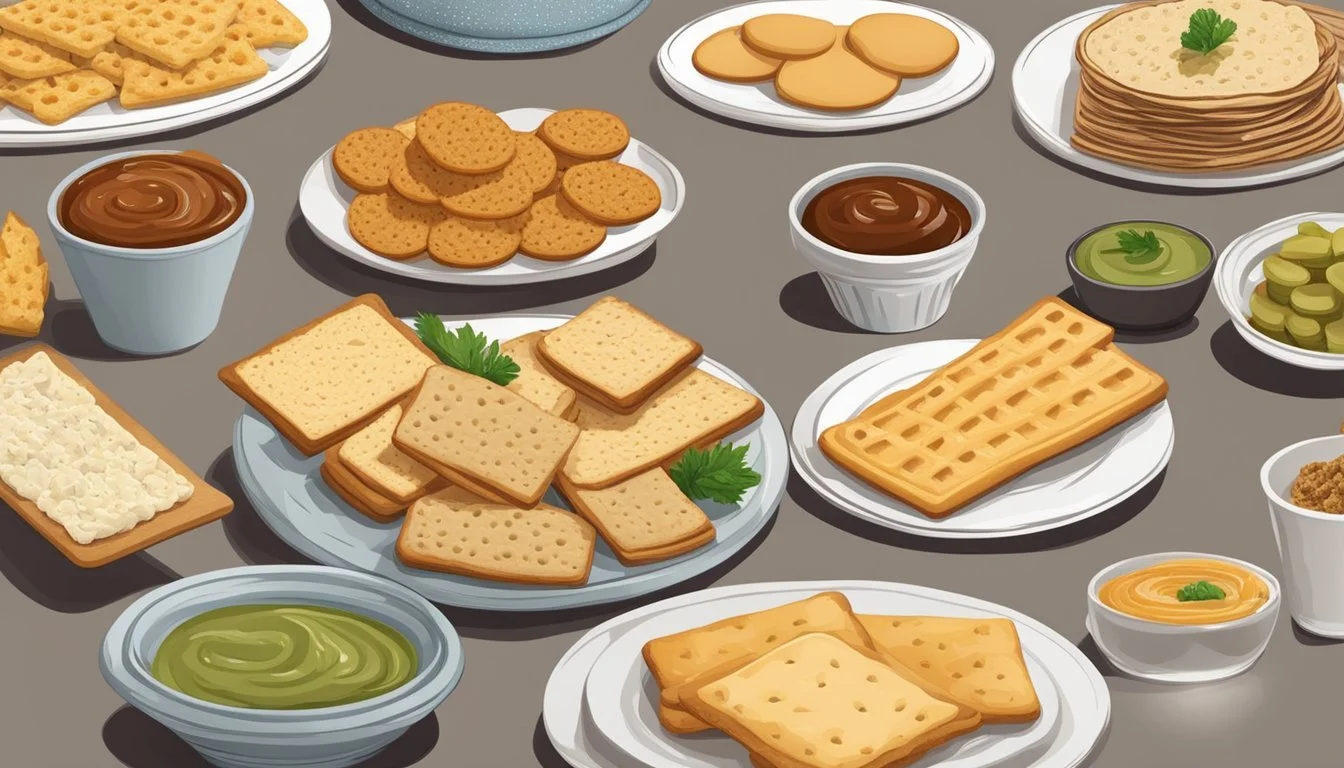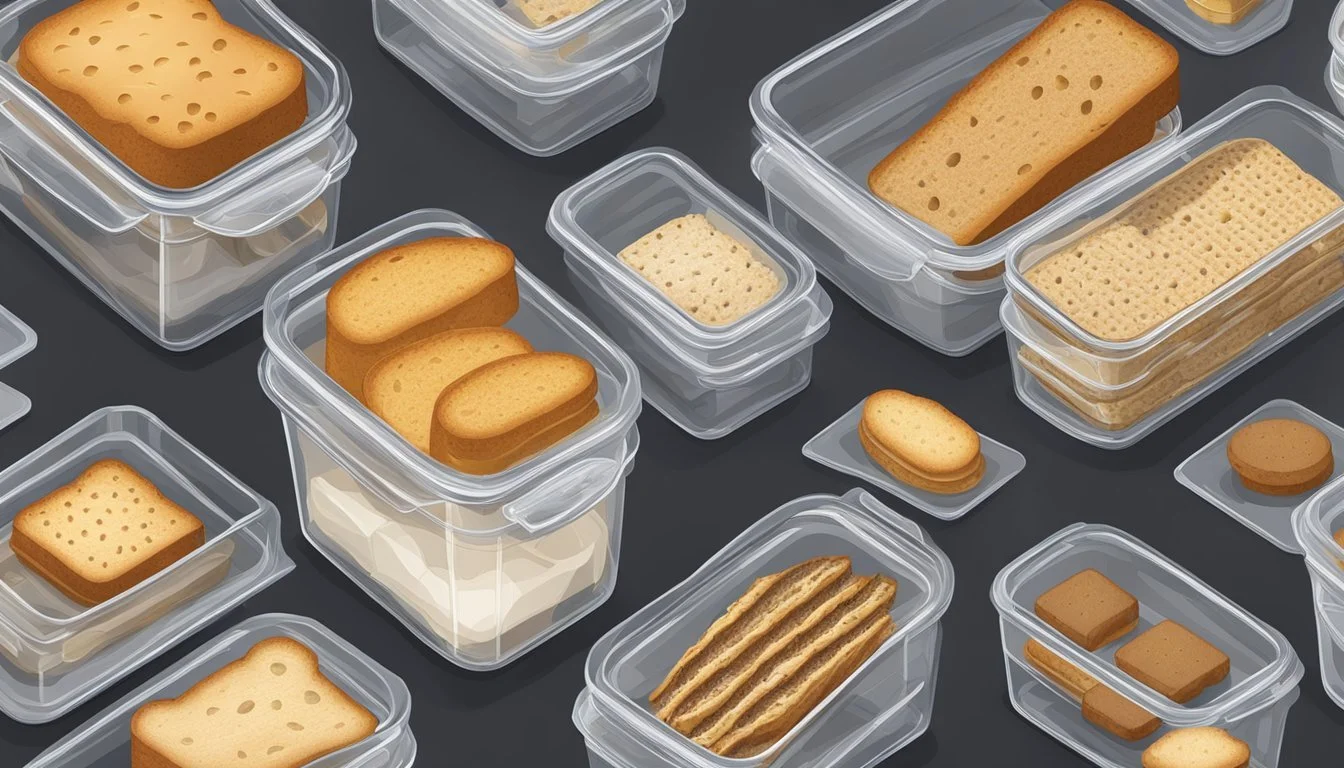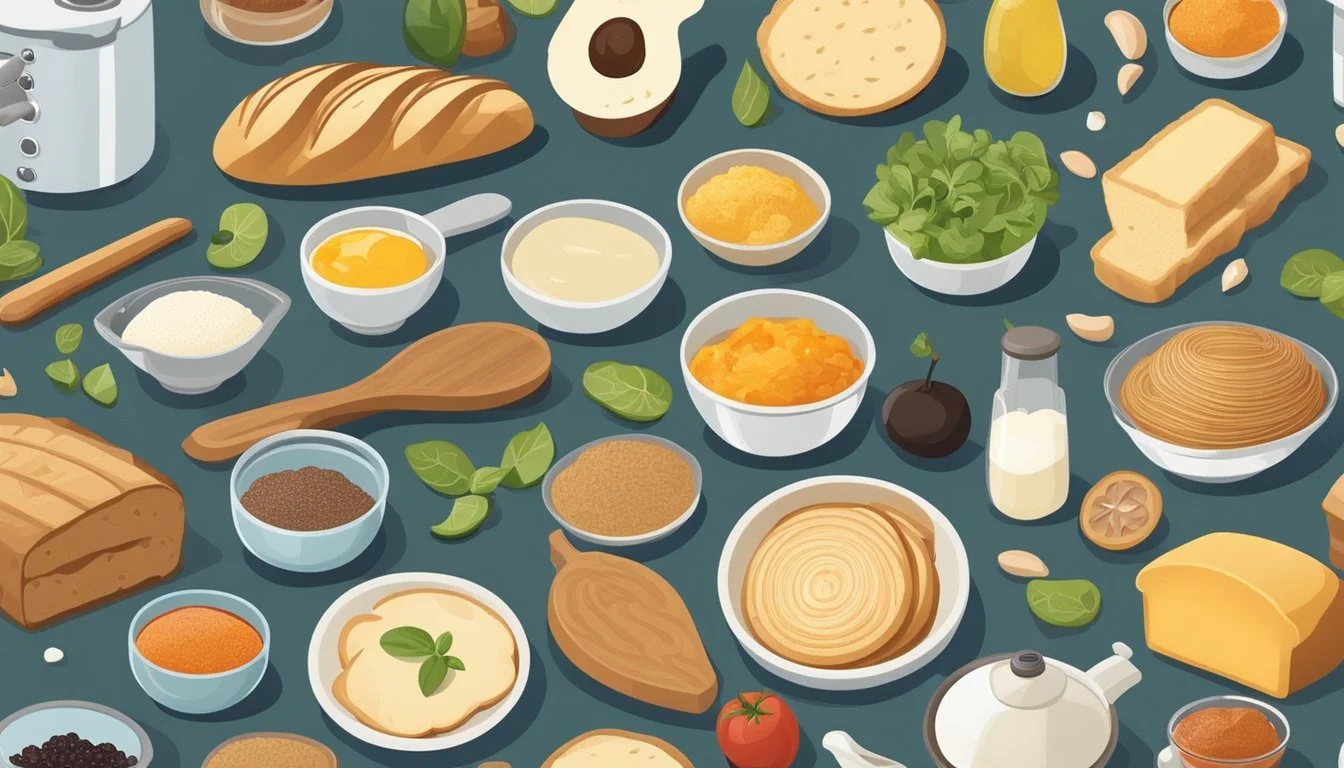Melba Toast Substitutes
Ideal Alternatives for Your Snacks and Spreads
Melba toast, the crispy and thinly sliced toast, has been a staple in the world of hors d'oeuvres and light snacks since its creation. Named after the Australian soprano Nellie Melba, this delicate food item is known for its versatility and ability to complement a wide variety of toppings, from pâté to smoked salmon. Originally made from sliced bread, Melba toast's creation is rooted in a desire for a lighter, crispier alternative to the dense, chewy texture of regular toast.
However, there are times when Melba toast isn't readily available or when a change in texture or flavor is desired. In such instances, food enthusiasts and seasoned hosts alike may seek out suitable substitutes that maintain the integrity of their dishes. The search for an alternative to Melba toast often involves looking for options that share its key features: a crunchy texture, a shape conducive to toppings, and a flavor that does not overshadow the paired delicacies. Bagel chips, with their crisp bite and round shape, offer a close approximation to Melba toast and have gained popularity as a substitute.
History and Origin of Melba Toast
Melba toast's origin is intimately linked with a famous opera singer and a renowned chef at the turn of the 20th century. It represents a culinary creation born out of practical needs, later becoming a fixture in fine dining establishments and households alike.
Invention by Nellie Melba
Dame Nellie Melba, born Helen Porter Mitchell, was an acclaimed Australian opera singer who became synonymous with the Melba toast. While suffering from an illness in 1897, Melba needed a light and delicate food. Auguste Escoffier, the notable chef who worked closely with the singer, crafted the toast, which was thinner and crisper than regular toast, to suit her dietary requirements.
Association With the Savoy Hotel
The Savoy Hotel in London is closely associated with the creation of Melba toast. Escoffier, who was the head chef there, served the new creation to Melba during her stays. The Savoy's tradition of upscale service and luxury dining helped cement the toast's place in culinary history, as it was initially offered as an accompaniment to soups and salads, and later became a popular food item in its own right.
Development Over Time
Over time, Melba toast evolved from a culinary improvisation to a widely recognized food item. A simple yet meticulous process is involved in its preparation: a slice of bread is toasted, the crust is removed, and then the bread is sliced again and re-toasted until crisp. This process, although originally a practical solution for a delicate stomach, later transitioned Melba toast into a versatile and crunchy accompaniment enjoyed with a variety of toppings.
Nutritional Profile
The Nutritional Profile of Melba toast variations is important for those monitoring their diet, considering calories, macro-nutrient balance, and specific dietary needs such as sodium and fiber intake.
Calories and Macronutrients
Melba toast is known for being a low-calorie snack option. On average, it contains:
Calories: Approximately 25 per slice
Carbohydrates: 5 grams per slice
Protein: Minimal amounts
Total Fat: 1 gram per slice, which may include trace amounts of saturated, trans, and unsaturated fats.
Comparative Sodium and Fiber Content
When comparing Melba toast to other snacks, its sodium and fiber content are relatively modest. Melba toast typically offers around:
Fiber: 1 gram per slice
For precise Sodium levels, one should refer to specific brand nutrition labels, as these can vary.
Melba Toast in Special Diets
Those adhering to special diets often find Melba toast a suitable option because:
It's low in calories and fits into calorie-controlled diets.
The minimal saturated and trans fats help those watching their fat intake.
Melba toast can be integrated into diets that require monitoring of carbohydrate and protein levels.
Making Homemade Melba Toast
Homemade Melba toast serves as a versatile and crunchy accompaniment to a variety of toppings. This guide focuses on creating Melba toast with a classic recipe that ensures the perfect golden brown finish and crisp texture.
Essential Ingredients
White Bread: Start with thin slices of white bread, which will be the base of the toast.
Butter: For added flavor, some recipes suggest a light spread of butter on both sides of the bread. This step, however, is optional.
Step-by-Step Baking Guide
Preparation: If using, butter both sides of white bread slices evenly. Preheat the oven to a low temperature, around 250 to 275 degrees Fahrenheit (121 to 135 degrees Celsius).
Cutting the Bread: Remove the crusts to create squares or cut the bread into the desired shape.
Baking: Arrange the bread slices in a single layer on a baking sheet. Place them in the oven.
Turning the Bread: After 15-20 minutes, or once the bread is lightly browned, carefully flip each piece to ensure even baking. Continue to bake until crisp.
Tips for Achieving Golden Brown Crusts
Temperature Control: Keep the oven at a low heat to bake the bread slowly and avoid burning.
Even Slices: Uniformly sliced bread promotes even browning and consistent crispness.
Monitoring: Keep a close eye on the oven during the last minutes of baking to achieve the desired golden hue without overcooking.
Melba Toast Substitutes
When searching for an alternative to Melba Toast, it's important to consider texture and flavor. The following substitutes are excellent options for maintaining the crispiness and subtlety commonly desired for spreads, toppings, and breading purposes.
Panko and Breadcrumbs
Panko breadcrumbs are a Japanese-style breadcrumb known for their light, airy texture and crispiness. They are an ideal substitute for Melba Toast when used as a coating or in recipes that require a crunchy element. Unlike the denser texture of traditional breadcrumbs, panko gives a flakier crust and is commonly used in baking and frying.
Biscuits and rusk can also serve as a good replacement, especially in recipes that call for a crunchy, crumbled component. However, one should be cautious as they may lend a sweeter taste compared to the neutrality of Melba Toast.
Crispbreads and Crackers
For a Melba Toast alternative that serves as a vehicle for cheese, dips, or spreads, one might opt for various forms of crispbreads or crackers. These come in numerous shapes and sizes, and often the selection will depend on the desired thickness and flavor profile.
Bagel chips are an excellent example, offering a crunch similar to Melba Toast. They can be round or square and are ideal for savory toppings such as smoked salmon or pâté. Zwieback, a twice-baked bread, is less versatile but still offers a satisfying crunch, particularly in sweet applications.
Homemade Alternatives
For those inclined to create their own substitute, a homemade approach can yield fresh and flavorful results. One can toast bread slices at a low temperature in the oven to replicate the crispness of Melba Toast. By spreading a thin layer of butter on the bread before baking, one achieves a golden and crisp texture.
To create smaller, uniform pieces akin to Melba Toast, bread can be cut into squares or triangles before baking. This method allows for personalization in both flavor and form and is a practical choice when store-bought options are unavailable.
Pairings and Uses
Melba toast serves as an excellent base for a variety of culinary applications. Its crisp texture and subtle flavor make it a versatile component for soups, salads, and toppings, as well as an array of appetizers ideal for gatherings.
Ideal Soups and Salads
Soups: Melba toast can be crumbled as a crunchy garnish on top of soups such as tomato bisque or a classic minestrone.
Salads: A handful of Melba toast crumbs adds a satisfying crunch to salads, from Caesar to a simple garden salad, complementing both the texture and flavor profile.
Recommended Toppings and Spreads
Spreads: One can spread creamy substances like hummus or cheese spreads across Melba toast for a rich and savory bite.
Jams: For a sweet and savory mix, Melba toast pairs well with fruit jams such as fig or apricot, topped with soft cheeses like Brie or Camembert.
Creative Appetizers and Party Food Ideas
Dips: Melba toast is a sturdy dipping option, perfect for both robust and delicate dips, from spinach and artichoke to subtle seafood mousses.
Pâté: It's commonly used as a base for pâté due to its ability to hold the spread without becoming soggy.
Cheese Pairings: Offer guests an assortment of Melba toast with a cheese platter featuring varieties from hard cheddars to soft goat cheese to cater to all preferences.
Health and Dietary Considerations
When considering substitutes for Melba toast, it is crucial to assess allergen content and the need for options with lower calories and sodium to cater to various health requirements.
Allergen Information
Substitutes for Melba toast may contain common allergens such as nuts, milk, and yeast. For example, panko breadcrumbs are often used as a Melba toast alternative but typically contain wheat, which could be an issue for those with gluten intolerance or celiac disease. Individuals with allergies should scrutinize the labels for allergen information.
Nuts: Some crispy crackers and chips might be processed in facilities that handle tree nuts or peanuts.
Milk: Dairy-based substitutes should be avoided by those with lactose intolerance.
Yeast: Yeast-free options are necessary for those with yeast allergies or intolerances. They should look for substitutes like rice cakes or corn-based chips.
Low-Calorie and Low-Sodium Options
When seeking substitutes for Melba toast for those monitoring their intake of calories or sodium, it is important to compare the nutritional labels. Bagel chips might provide a crunchy texture akin to Melba toast but can be higher in both calories and sodium.
Substitute Calories per Serving Sodium per Serving Bagel Chips Higher Higher Rice Cakes Lower Varies Vegetable Slices Lowest Low
Sugar: Low-sugar content is also a consideration; sweet potato slices can serve as a nutrient-rich substitute with natural sugars.
Calories: Air-popped popcorn and thinly sliced vegetables, such as cucumbers or zucchini, provide low-calorie alternatives.
Sodium: For low-sodium needs, homemade alternatives like lightly toasted slices of whole-grain bread, where the sodium content can be controlled, are a wise choice.
Storing and Preservation
When it comes to Melba Toast and its substitutes, optimal storage is key to maintain freshness and extend shelf life. Correct storage methods also preserve the texture and taste, ensuring that these crispy snacks are enjoyable down to the last bite.
Shelf Life
Melba Toast:
Homemade Melba toast typically has a shelf life of up to 3 days when stored properly.
Commercially prepared Melba toast, when unopened, can last much longer due to preservatives and packaging; always check the expiration date for guidance.
Substitutes:
Bagel chips and other substitutes vary in shelf life; for instance, panko breadcrumbs can last several months if unopened and stored in a dry environment.
Best Practices for Freshness
An airtight container is paramount in preserving the crispness of Melba toast and its substitutes. Here's how one can ensure peak freshness:
Cooling: Always allow Melba toast to cool completely before storage to prevent moisture build-up which can lead to sogginess.
Airtight Storage:
Use airtight containers or resealable bags to lock out moisture and other contaminants.
Keep these containers in a cool, dark area like a pantry, away from direct sunlight or heat sources.
By adhering to these simple yet effective preservation techniques, Melba toast and similar products can maintain their intended quality for the maximum duration possible.
Versatility in Recipes
When looking for Melba toast substitutes in various recipes, one has a plethora of options suited for both sides and mains, as well as ways to enhance traditional dishes.
From Sides to Main Courses
Melba toast is a preferred side often paired with dips or toppings such as cream cheese, egg salad, or smoked salmon. However, alternatives like bagel chips provide a round, crunchy base suitable for these classic sides. They can also transition smoothly into main courses when used as a crust for pasta dishes or to add texture to casseroles. Here's a practical example:
Cranberry Chutney Spread on Bagel Chips: A modern take on a classic side dish, merging the tartness of cranberry with the crunch of bagel chips.
Innovating Traditional Dishes
Melba toast's crispy texture is often mimicked with substitutes in traditional recipes for a contemporary twist. Panko breadcrumbs, made from crustless white bread without any seasonings, are an excellent way to innovate dishes without altering flavors. They can be incorporated as follows:
Used in lieu of flour for a lighter, crispier breading on proteins
Mixed with melted butter for a delectable topping on baked gratins or vegetables
Cultural and Culinary Impact
Melba toast has a unique place in fine dining and various cuisines, often associated with gourmet appetizers and elegant desserts like Peach Melba.
Melba Toast in Fine Dining
In the context of fine dining, Melba toast has been a staple accompaniment to a range of luxurious toppings. Chefs often employ it as a delicate base for canapés which may feature meats, cheeses, or pâtés. It originates from the same high culinary tradition that brought forth the dessert Peach Melba, a creation by Chef Escoffier in honor of the Australian opera singer Dame Nellie Melba.
Popularity across Different Cuisines
The adaptability of Melba toast to different cultures and cuisines is notable. Its unassuming flavor makes it an ideal platform for a variety of culinary contexts. For example, Italian cuisine may use it brushed with garlic oil, while a French charcuterie (What wine goes well with charcuterie?) platter may present it alongside an assortment of meats and cheeses. This versatility allows Melba toast to transcend cultural boundaries and become a beloved element in diverse gastronomic traditions.
Feedback and Adaptation
When considering Melba toast substitutes, two vital aspects come under scrutiny: the feedback from consumers, which often encompasses taste and preference, and the adjustment of these substitutes to meet changing taste expectations.
Consumer Reviews and Comments
Consumer feedback provides a wealth of information on the effectiveness of Melba toast substitutes. It is not uncommon to find comments highlighting both the taste and serving size as crucial decision-making factors. For a substitute to receive a positive reception, it should ideally be flavorful, lending itself well to an array of toppings. Seasonings, such as garlic powder or herbs, when added to a Melba toast alternative like bagel chips, can elevate the taste profile.
Positive Feedback:
Satisfactory flavor when seasoned well
Appropriate serving size for snacks
Negative Feedback:
Some found the substitutes too flavorless without additional toppings
Inconsistencies in seasoning levels
Adapting to Changing Taste Preferences
As taste preferences evolve, substitutes for Melba toast are adapted to appeal to a wider audience. A foreseeable challenge is ensuring that these alternatives, while maintaining a semblance in texture, do not become monotonous in flavor. The introduction of various seasonings can transform a simple, seemingly flavorless base into a delectable snack. Producers may opt to infuse their products with popular flavors, considering garlic powder as a favored seasoning to heighten culinary pleasure.
Current Trends:
Increased emphasis on bold flavors
Inclusion of varied seasonings to cater to diverse palates
Adaptation Strategies:
Periodic recipe adjustments to align with consumer feedback
Experimentation with new flavor combinations to maintain consumer interest


